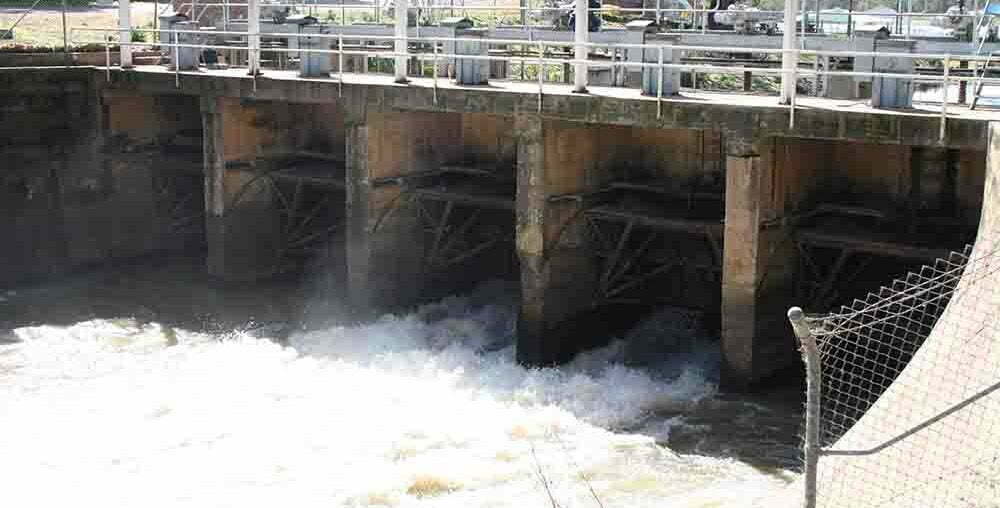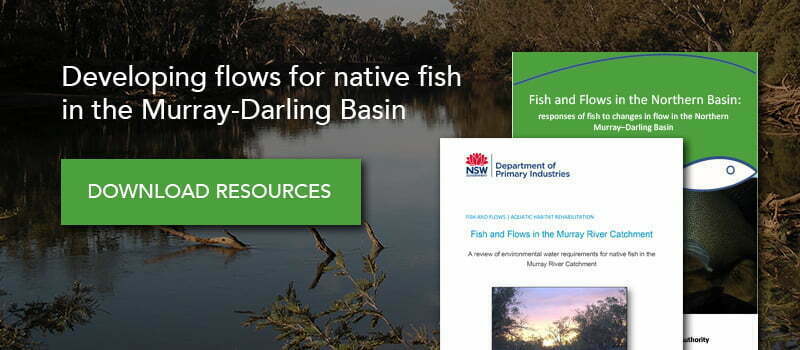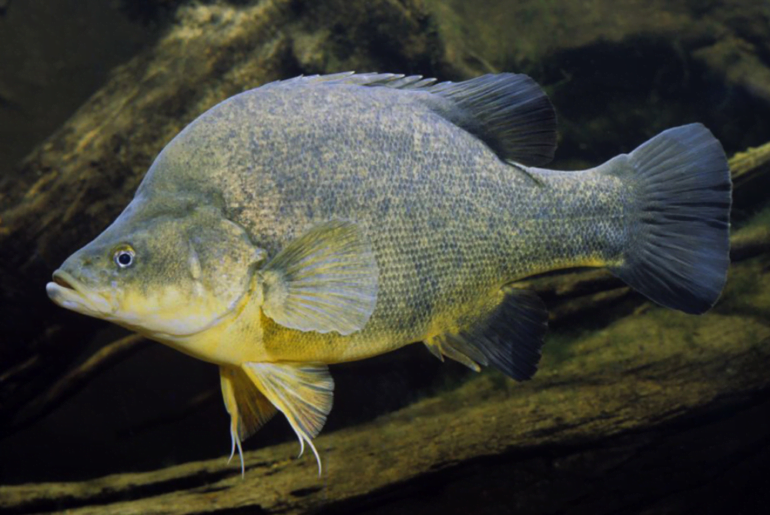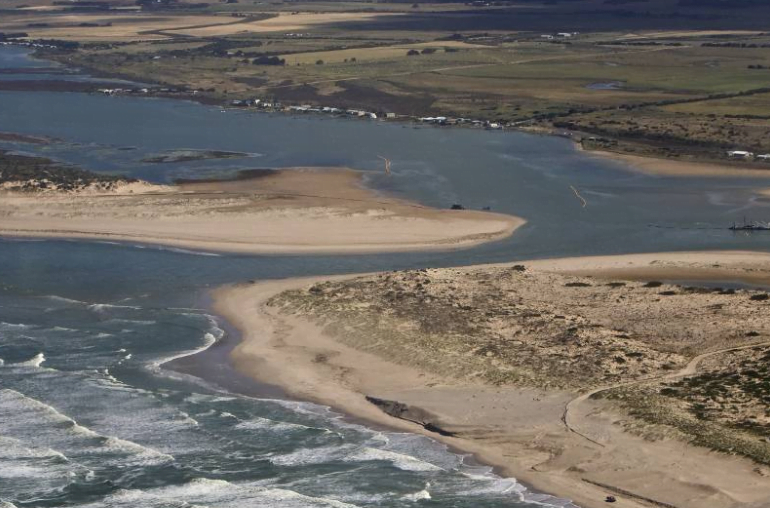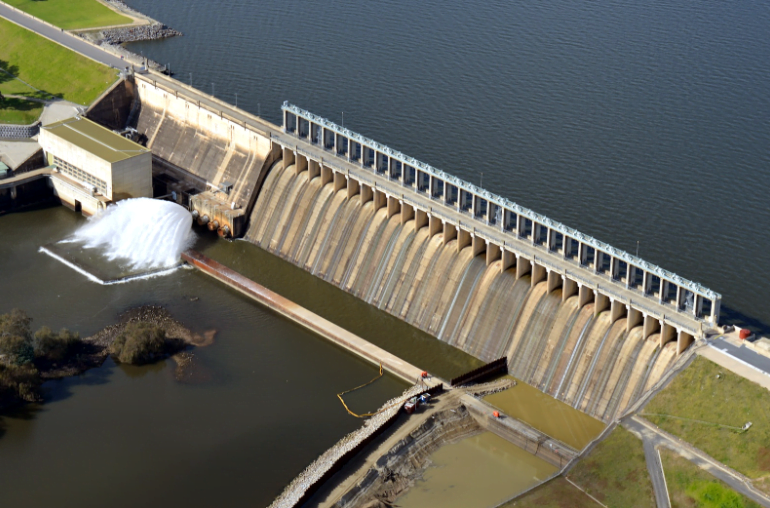The flow of water drives the life cycle of fish – whether it’s a Murray cod migrating upstream on high flows in early spring, or a tupong (congolli) triggered by the high flows in late autumn to migrate downstream to an estuary to spawn. Water flow makes or breaks the best of swimmers, and plays a huge role in determining the kind of fish that thrive and survive in the water. This means that changing the flow of water needs careful planning and management.
There are two major factors affecting water flow in rivers and wetlands:
Natural events creating ‘natural flows’:
Regular rainfall run-off and groundwater impact water flows, and native flora and fauna have naturally adapted to these over thousands of years. Periods of low and high flow have played an important ecological function in supporting a rich diversity of organisms and habitats. Floods, droughts and natural disasters all impact on natural flows – they are generally on a scale and intensity that humans are unable to control, something we are learning to accept and work with, rather than against, in our water management planning.
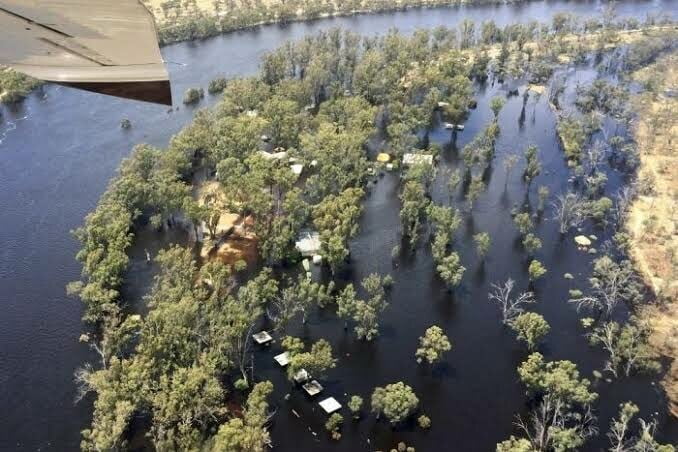
Regulation of rivers, creating ‘regulated flows’:
Where humans have been able to harness the power of rivers and waterways is through our sophisticated regulation infrastructure which enables us to manipulate flows to meet our needs. One of the greatest threats to native fish has been this ‘regulation’ of rivers through the construction of structures such as large dams, weirs, canals etc for access as urban and rural water supplies:
- locks allow navigation on large rivers to facilitate boating traffic. In the past, this included commercial freight transport
- weirs create pool environments for diversion into irrigation channels, for pump intakes, recreational boating and swimming, and other aesthetic reasons
- dams store water for stock, domestic and irrigation supply, and for flood mitigation
- floodgates and levee banks control floodwaters on urban and agricultural land and prevent upstream saltwater intrusions in coastal areas
- road crossings allow traffic to pass over waterways

Regulated flows have many impacts on native fish:
- Disruption to natural environmental cues necessary for reproductive cycles.
- Some native fish rely on high flows during winter and spring as cues to begin migration and spawning. Without these seasonal high flows, breeding can be severely affected. For example, Murray cod migrate upstream on high flows in early spring then return downstream when river levels drop in the summer. Female tupong (congolli) migrate downstream to spawn in marine or estuarine spawning grounds only when there are high flows in the late autumn or winter.
- Impaired spawning, growth, recruitment, feeding and other life cycle processes of native fish resulting from the release of cold water from low level dam outlets.
- Creation of physical barriers to native fish movement and migration.
- Reduction of available habitat due to changes in the area, frequency and duration of floodplain and wetland inundation; and alterations to the natural processes of sediment erosion, transport and deposition.
- Extraction and dredging activities can destroy instream habitats, change natural flows and decrease water clarity.
- Altering in-stream physical, chemical and biological conditions can change the biota, resulting in less food being available for fish.
Developing flows for fish
So how can people change the flow of water to support the native fish populations and manage river health? We know that effective flow restoration requires an understanding of the relationships between hydrology, life history and population dynamics of fish and their food source, so that these can then be linked to management decisions.
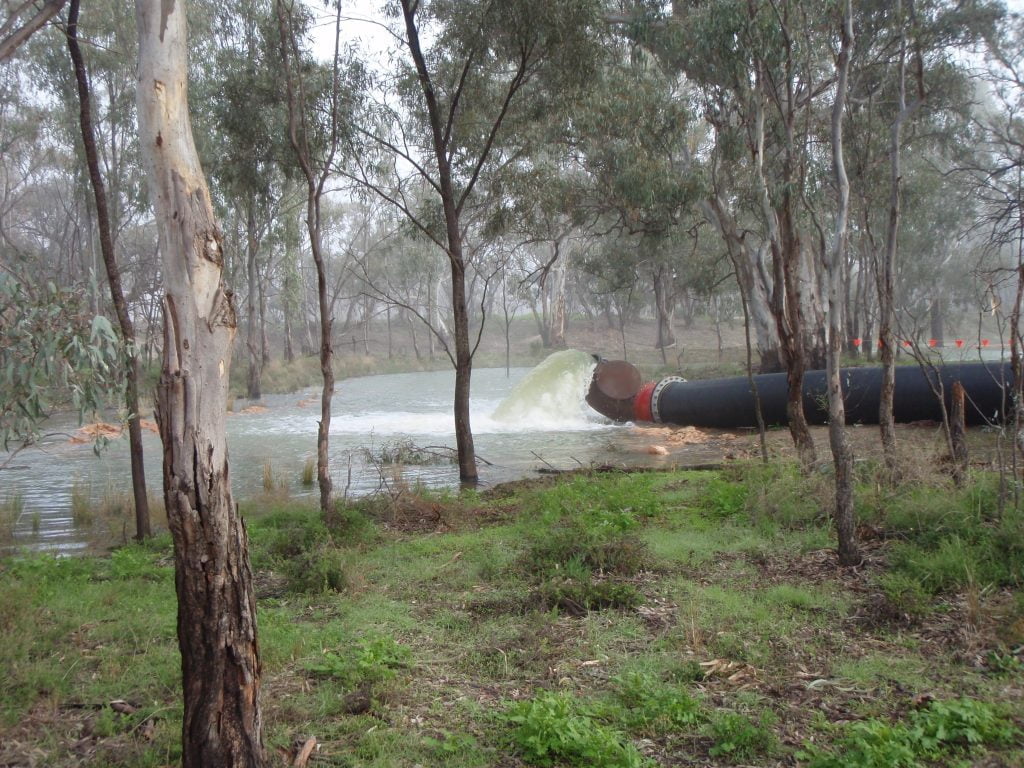
We’d like to share some great new resources that combine research, science and our learning so far, in developing flows for native fish in the Murray-Darling Basin. We hope you find them useful and please share them widely with anyone you think might be interested.
Click the image below to download your copy.
Related stories:
Environmental flows – connecting hydrology and freshwater biodiversity
